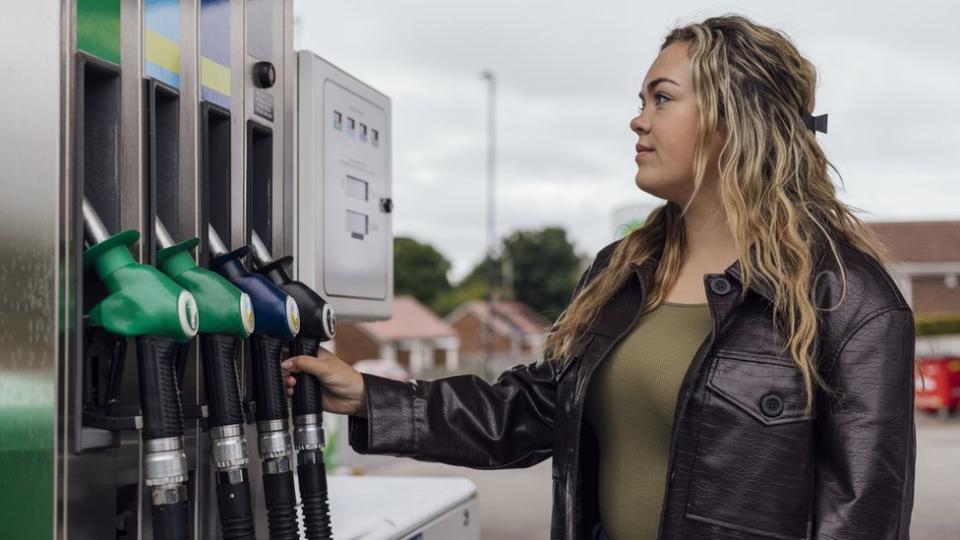Petrol prices on UK forecourts hit 150p a litre

Petrol prices across the UK have hit an average 150.1p a litre, reaching the highest level since last November, according to the AA motoring group.
Data also showed that average diesel prices rose to 158.3p a litre on Monday.
Experts blamed a rise in oil prices because of tensions in the Middle East, as well as a weaker pound compared to the dollar.
The AA predicted drivers would "re-tighten their belts on other spending".
While overall inflation - which measures the pace of price rises - has eased, the cost of petrol and diesel both rose in March.
"Inflation has been heading downwards at quite some speed but petrol's rebound to 150p a litre leaves a big boulder in the road," said Luke Bosdet, the AA's spokesman on pump prices.
Prices are based on data collected by the Competition and Markets Authority (CMA) from nearly 3,000 forecourts and analysed by market research firm Fuel Prices Online.
Data showed that 28.1% of the forecourts were charging at least 150p per litre for petrol on Monday, up from 23.8% a week earlier.
But Mr Bosdet predicted that fuel prices are unlikely to be elevated for long with wholesale costs easing a little in recent days, adding that filling up "may not get much worse in the short-term".
Oil prices have fallen after they spiked in the wake of Israel's retaliatory attack on Iran last week. Caroline Bain, chief commodities economist at Capital Economics, said: "Given that there will be some lag between spot crude oil prices in financial markets and prices on the forecourt, the latest rise is perhaps not so surprising."
While Brent crude - a key benchmark for oil prices internationally - has receded from last week, it is still trading 13% higher at $87 per barrel compared to the start of the year.
'Pain at the pumps'
Ms Bain said: "We think that oil prices may well rise in the near-term if there is a further escalation of tensions in the Middle East, but that they will start to fall in the second half of this year."
RAC fuel spokesman Simon Williams said that drivers were "really starting to feel pain at the pumps" but he claimed much of that depended on the margin that retailers may decide to take.
"Higher margins always mean higher prices for drivers," he said.
The competition watchdog cited concerns about higher retailer margins - the difference between what a retailer pay for its fuel and what it sells at - as recently as last month.
In March, the CMA said that there had been a sustained increase in these margins which it found "concerning". It suggested that one of the key findings of a market study it published last year - that competition levels in the fuel market have weakened - was still valid.
Concerns about the high price of fuel prompted the CMA to look into the sector and its study concluded that some retailers were overcharging.
It found that motorists generally have to shop around themselves, keeping an eye out for the best prices while they are out and about.
The government responded to the study by proposing the "Pumpwatch" scheme to ensure that fuel prices were updated in near real-time, so motorists can compare prices via price comparison websites, satnavs and navigation apps.
A consultation on the scheme is still ongoing.
